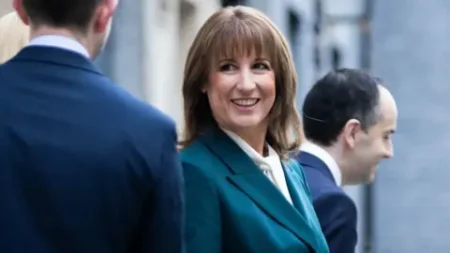**The Prices of School Uniforms Stir Dismay Among Parents in Hull**
A recent survey has shed light on a pressing issue facing parents in Hull: the exorbitant costs associated with school uniforms and Physical Education (PE) kits. Many parents, endlessly striving to provide their children with the necessary attire for school, have described these costs as “extortionate” and “ridiculous.” This concern is not confined to Hull alone; a poll by The Children’s Society charity revealed that a notable 38% of parents in the Yorkshire and Humber region, alongside 37% in the East Midlands, are struggling to afford mandatory uniforms and PE kits.
Karyssa Bates, a mother of four from Hull, explains her budgeting strategy—starting to save at Christmas for the following academic year’s uniforms. She candidly expressed the difficulties of managing the financial burden, highlighting the extensive resources required to ensure her children are appropriately dressed for school. This sentiment echoes among other families, who are feeling the strain of rising living costs coupled with educational expenses.
In response to the growing concerns, the Department for Education (DfE) has announced amendments to existing regulations. The aim is to limit the number of branded items that schools can require, thereby alleviating some of the financial pressure on parents. A spokesperson from the DfE remarked, “Our Plan for Change is focused on removing barriers to opportunity and easing the financial burden on families.” The initiative is part of a broader strategy designed to enhance pupil well-being and educational equity.
The statistics regarding the costs associated with school uniforms are eye-opening. Current figures indicate that parents can expect to spend an average of over £340 for primary school uniforms, while secondary school students can cost approximately £454. These figures have alarmed parents like Karyssa Bates, who voiced frustration over the reality that children grow so quickly that purchasing new uniforms each year can feel trying. “Every year, they need new uniform, and sometimes they need more than one pair of shoes throughout the school term,” she remarked, underlining the frequent demands placed on household budgets.
Another parent, Alex Fenwick, also from Hull, highlighted her ordeal with the daunting cost of a branded uniform for her daughter as she begins secondary school. Fenwick reported spending approximately £150 just on branded items, without factoring in essential extras such as shirts, shoes, and bags. With her own financial strain heightened due to her disability and reliance on benefits, she confessed to soliciting help from her parents; “Everything is so tight, I just can’t afford it,” she lamented.
To tackle the persistent issue of high uniform costs, several local councils, including Hull City Council and North Lincolnshire Council, have initiated grant programs aimed at assisting families. Councillor Jack Haines, representing Hull City Council, informed that the recent funding initiative has already supported over 2,600 pupils and additional support is anticipated for the upcoming year. He remains optimistic that the government will expedite reforms concerning school uniform policies as part of the Children’s Wellbeing and Schools Bill to lessen families’ financial burdens.
In an innovative approach to circumvent these challenges, Michael Morris, an advocate for child welfare in Lincolnshire, has launched a uniform swap shop aimed at promoting sustainability. Morris’s initiative is sparked from his observations of financial struggles some families have faced, emphasizing the concept of repurposing outgrown uniforms in good condition rather than discarding them. He noted, “Being able to have something like this means it’s easier for families and gives them hope of having a few more pennies at the end of the month.”
The concerns surrounding school uniform costs have prompted discussions around financial assistance and sustainable initiatives, underscoring a deeper issue related to socioeconomic disparities impacting the education system. The collective voices of parents, supported by local councils and innovative projects, highlight the urgent need for policy changes and community support to ensure that every child has access to essential educational materials without undue financial hardship.











